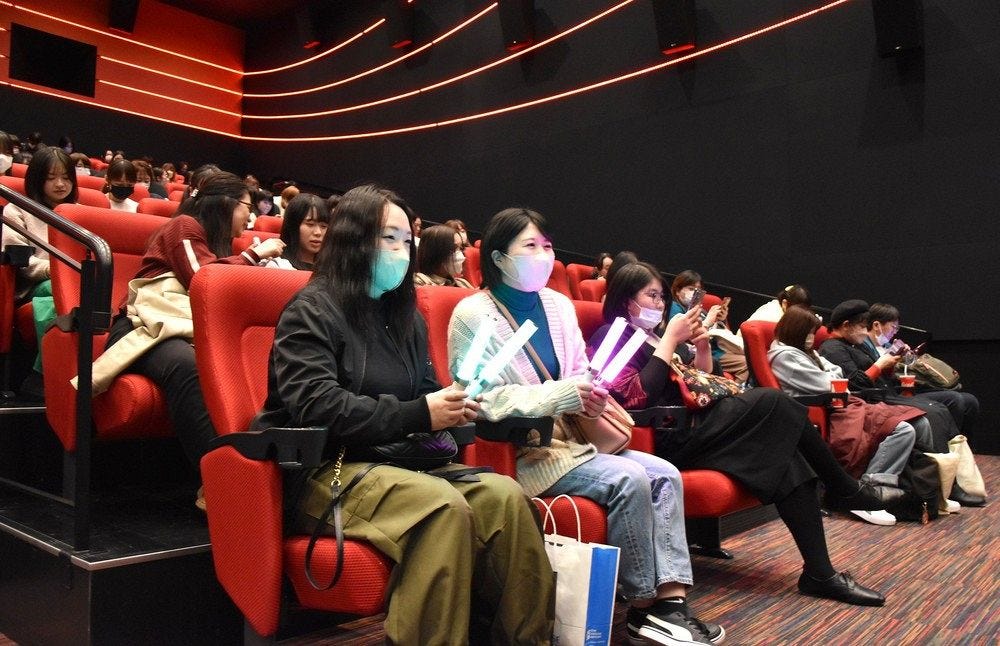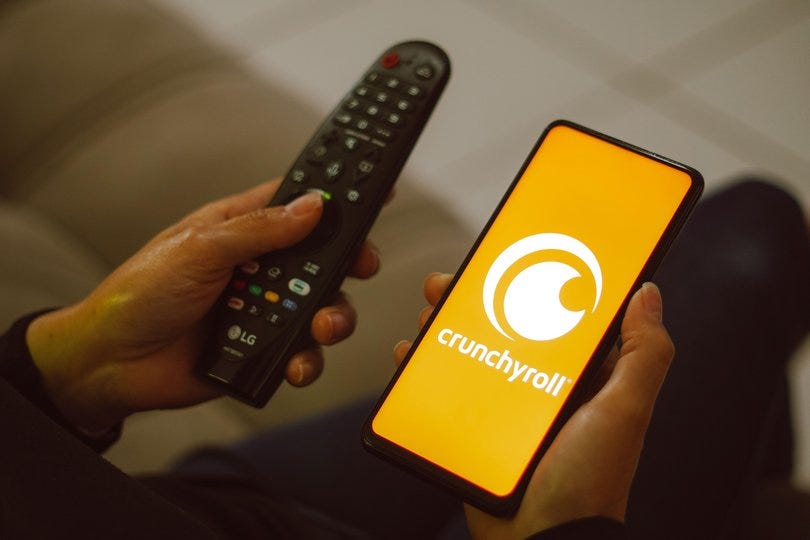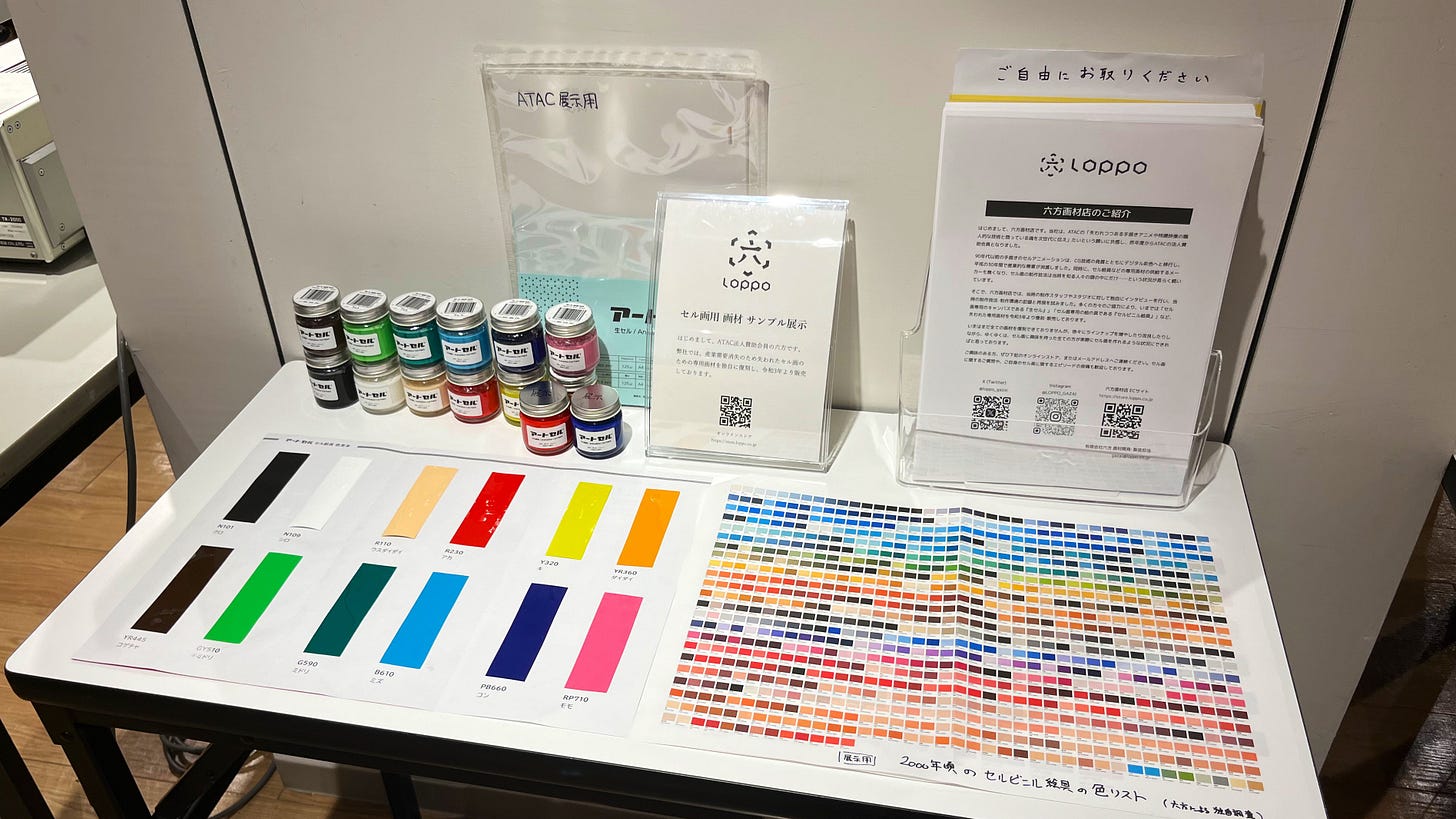Female fans are driving a male idol anime boom
Plus: Crunchyroll renews focus on device support; 'The Boy and the Heron's secures China distributor; Creating a digital archive of anime colors; and more
This is your weekly Animenomics briefing, covering the business of anime and manga. Today is Wednesday, January 24, 2024.
In case you missed it: Hayao Miyazaki’s The Boy and the Heron is nominated for Best Animated Feature Film in the 96th Academy Awards.
It is also nominated for Best Animated Film in the 77th British Academy Film Awards and is the first work of anime shortlisted by the British Academy of Film and Television Arts.
Male idol anime franchises are growing in popularity

One of the biggest stories of the anime industry last year wasn’t about an anime adaptation of a popular manga title, but the male idol anime IDOLiSH7. A concert film released by the franchise last year is now leading the Anime Fan Award vote in the 2024 Tokyo Anime Award Festival.
Why it matters: Female audiences are pushing the male idol anime genre to new heights in Japan, and overseas distributors are taking notice.
IDOLiSH7’s concert film received theatrical releases in Thailand, Taiwan, Hong Kong, and South Korea and was screened at November’s Anime NYC convention after being picked up by Crunchyroll.
Catch up quick: IDOLiSH7 LIVE 4bit BEYOND THE PERiOD earned more than ¥2.8 billion (US$19 million) during its four-month run in the Japanese box office, making it one of the 100 highest-grossing anime films of all time.
This achievement is also notable because the film doesn’t present a story and only features stage performances by the anime’s characters.
Tokyo-based anime studio Orange also received attention for its 3D CG work in the film and received a three-part feature in CGWORLD magazine.
What’s happening: Public broadcaster NHK also caught on to the trend and is airing a program about male idol anime’s growing popularity on its international service this weekend.
Crunchyroll reinvests in device support with exec hire

Sony Pictures has hired former Netflix technology executive Christophe Jouin as Crunchyroll’s vice president of technology partnerships, bringing onboard Silicon Valley knowledge of device technology to the burgeoning anime streamer.
Why it matters: While Sony added Crunchyroll to several of its Bravia smart TVs last year, the platform still isn’t supported on most smart TVs and set-top boxes.
Funimation, an anime distribution company that Sony acquired in 2017 and later merged with Crunchyroll, has a separate platform that supports more smart TVs.
Where things stand: Jouin’s hiring in November has kicked off an engineering hiring spree at Crunchyroll. There are new job openings for engineers that work with operating systems like Android TV and Roku.
To become a one-stop shop for all anime fans, Crunchyroll needs to make its platform available on more devices and stabilize existing ones.
What they’re saying: “Beyond the hyper growth potential of Crunchyroll, I was especially attracted by the multi-experience nature of the anime market, with fans ultimately seamlessly transitioning back and forth from streaming to gaming to commerce,” Jouin wrote in a LinkedIn blog post.
Zoom out: Global use of smart TVs and streaming media devices grew 7.5 percent in 2022, according to research by S&P Global Market Intelligence.
Tizen (by Samsung) and WebOS (by LG), two of the most popular smart TV operating systems globally, don’t have Crunchyroll apps today.
Clippings: Alibaba secures ‘The Boy and the Heron’

China’s Alibaba Pictures signed a deal with Studio Ghibli to distribute The Boy and the Heron when the film is approved by government regulators later this year. (The Hollywood Reporter)
Two out of five Gen Z Americans watch anime on a weekly basis, according to a survey conducted by Vox Media last summer. Netflix was the most popular place to watch anime, used by three out of four U.S. Gen Z adults. (Polygon)
Manga artist Tetsuya Chiba, best known for Tomorrow’s Joe, is collaborating with the Agency for Cultural Affairs as the Japanese government ramps up research on digitizing, storing, and preserving manga manuscripts. (The Yomiuri Shimbun)
Kyoto District Court will issue a verdict this week in the trial of a man accused of setting fire to a Kyoto Animation studio building in 2019, killing 36. Prosecutors are seeking the death penalty. (The Japan Times)
South Korea’s webtoon industry grew nearly 17 percent in 2022, but the average income of artists also fell 17 percent from growing competition and a decline in consumption as COVID-19 restrictions were lifted. (The Korea Times)
Anime as an alternative to western media algorithms
“Anime is full of repetitive archetypes, but not the same repetitive archetypes of Western entertainment. It is made by committee, but not the same committees as Hollywood fare. And even though its edges have been smoothed by editors in similar ways, those edges don’t feel smoothed by the ‘sameitude’ success demands online.”
— Matt Alt, writer and author of Pure Invention: How Japan’s Pop Culture Conquered the World
Context: Anime’s prioritization of Japanese perspectives and characteristics over current pop culture trends makes it well-positioned to counter content served by global media companies today, Alt argues in his newsletter.
Yes, but: Just because anime production companies are focused on Japanese content, it doesn’t mean that they aren’t paying attention to overseas viewers.
Rewind: The anime industry’s proactive expansion into overseas markets today is a contrast to just a few years ago when producers seemingly left overseas business matters to global media companies like Netflix and Amazon.
“Can something that was produced merely on consignment and yet to which Japan does not hold the intellectual property rights really be called Japanese animation?” one Animation Business and Science Magazine column wrote in 2018.
Project aims to create archive of historical anime colors

Loppo, a Tokyo-based online art supply store, is on a quest to preserve traditional Japanese cel animation coloring techniques for future generations of animators.
Why it matters: As digitization efforts expand in the anime industry, reproducing original color is critical in preserving anime drawn and painted on celluloid.
Earlier this month, X (or Twitter) users pointed out the pink discoloration in some versions of Sailor Moon that occurred from color degradation in current master recordings of the anime.
What’s happening: Loppo is creating a digital archive of paint samples used by Wish, one of the anime industry’s most important finishing studios.
The archive currently includes 800 individual color samples and color charts for about 120 different works of anime.
Loppo was able to faithfully reproduce real-world paint colors in the digital space by using knowledge gained from video game development.
What they’re saying: “Because Japan is located in a harsh natural environment, there is always a risk that domestic historical materials will be scattered or lost,” Loppo president Toshinari Takahashi wrote in a blog post.
Takahashi believes the digital archive will play an important role in the restoration of older works of anime.
Animenomics is an independently-run and reader-supported publication. If you enjoyed this newsletter, consider sharing it with others.


